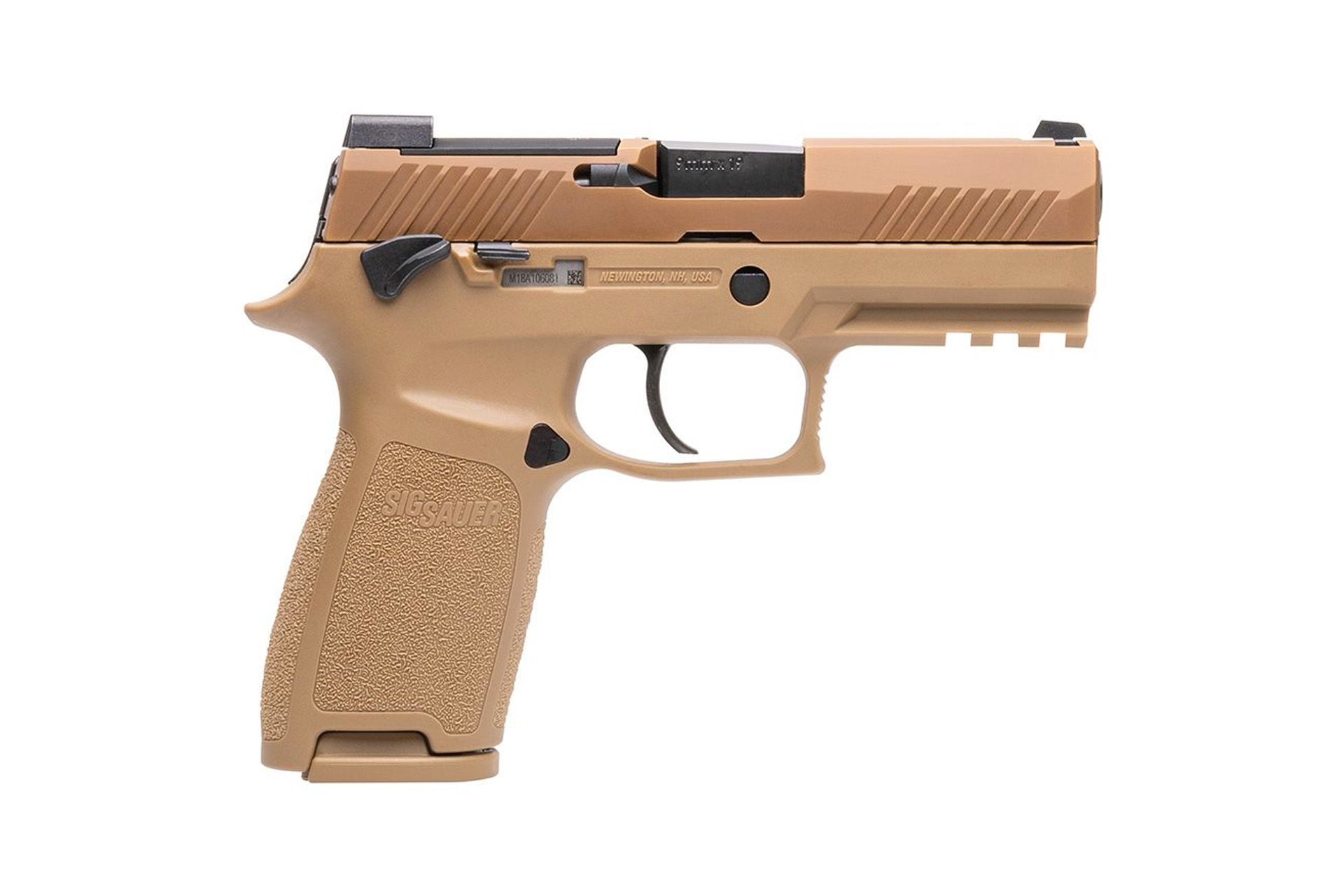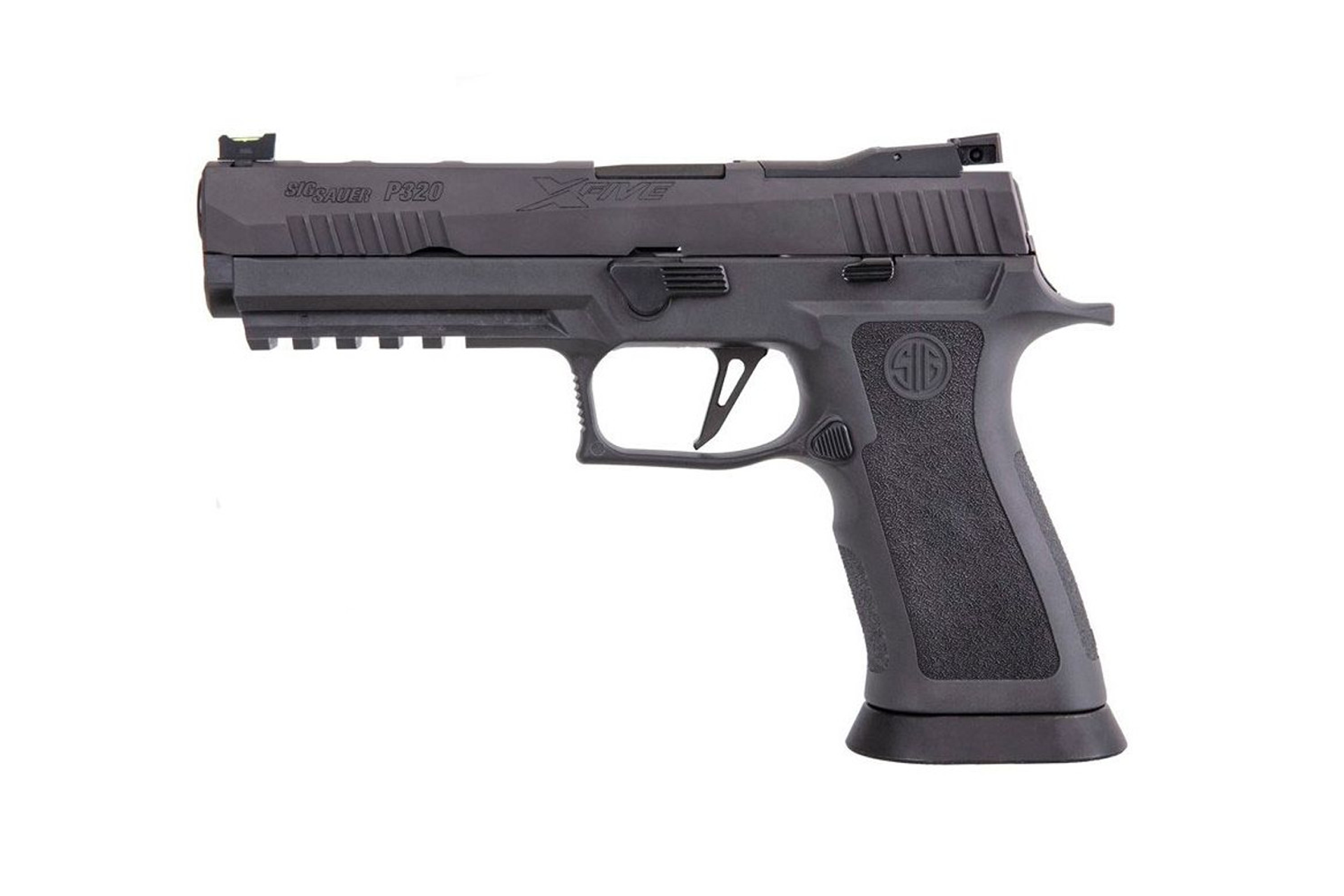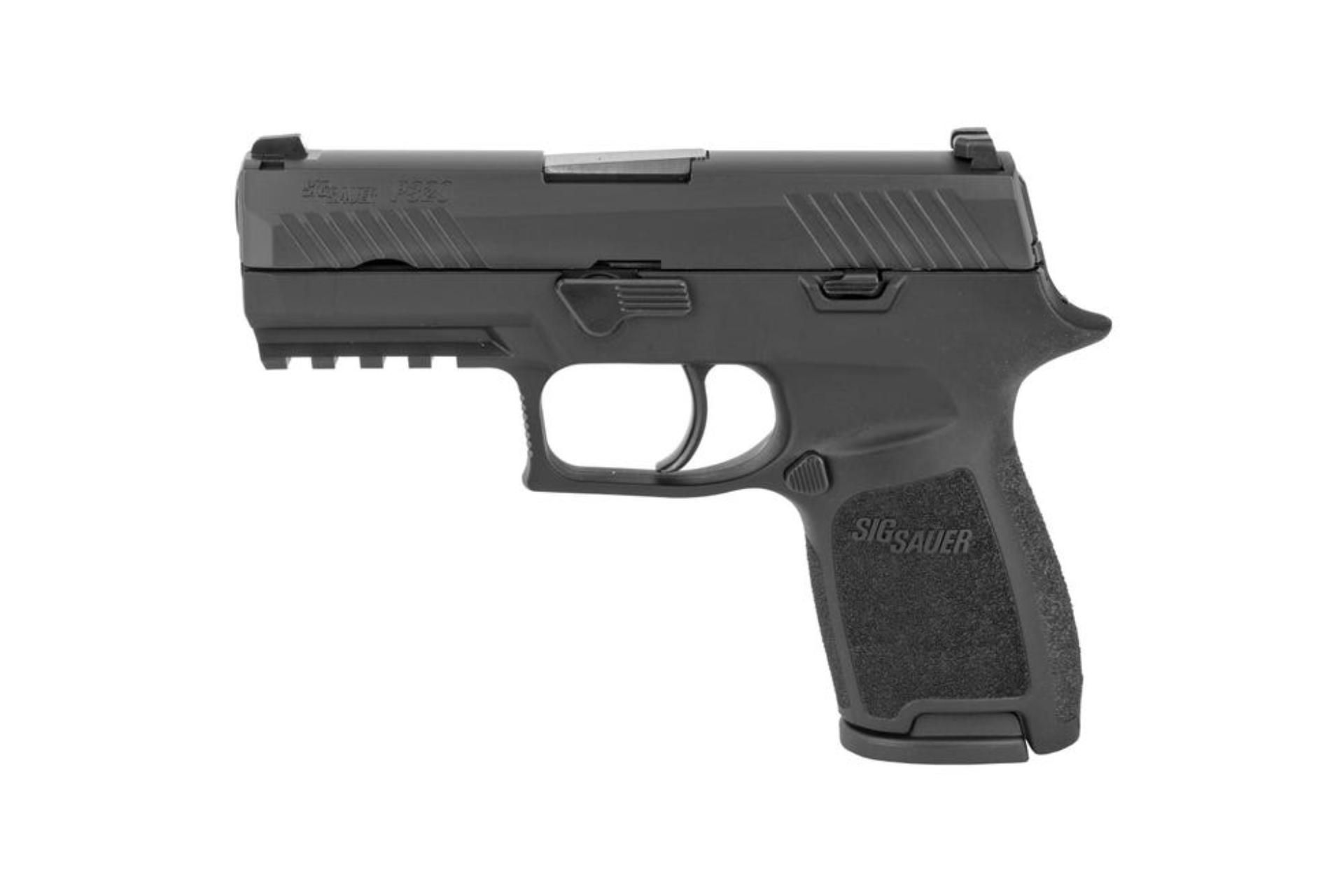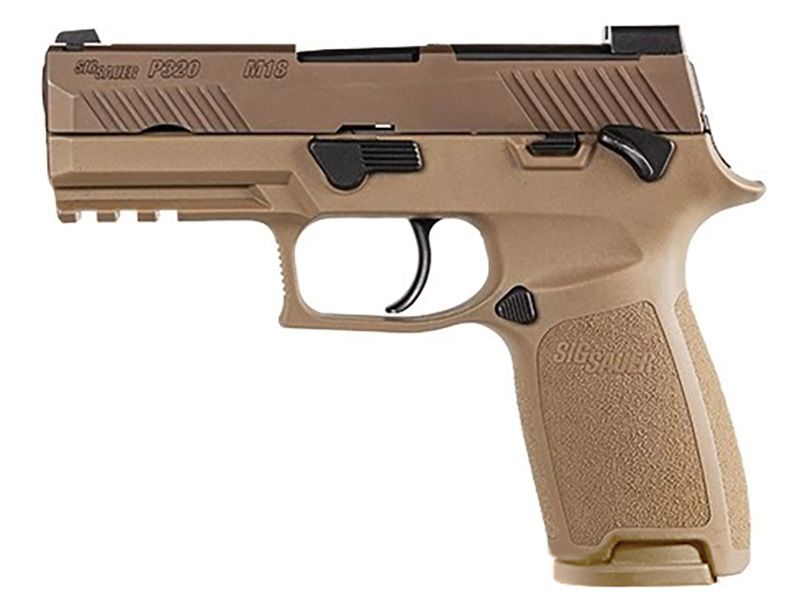Table of Contents
The Sig Sauer P320 series has solidified its reputation as an exceptional handgun, combining modularity, reliability, and adaptability in a way that resonates with shooters like us—if you can look past the controversy surrounding its safety history. Its compatibility with red dot optics, particularly the Romeo series, enhances its appeal for those aiming to refine their accuracy. In this review, we explore the advantages of using a red dot on a handgun, explain why the P320 remains an ideal platform, and share our firsthand experiences with the Romeo red dot for P320—specifically the Romeo X Pro and its enclosed variant—alongside the Holosun SCS 320. We’ll detail the optics-ready P320 lineup, including the M17 and M18, their optic footprints, and offer our honest assessment: while the Romeo X Pro performs well, the Holosun SCS 320 earns our preference for its durability and design. We’ll also discuss the training required to master a red dot setup, drawing from our personal journey with these optics.
Why a Red Dot on a Handgun?
Adding a red dot sight to a handgun significantly improves the shooting experience. Unlike iron sights, which demand careful alignment of front and rear posts with the target, a red dot provides a single illuminated point that simplifies aiming. This accelerates target acquisition, a critical advantage in high-pressure situations like self-defense or competitive shooting where precision and speed are paramount. The unlimited eye relief ensures the dot remains visible regardless of head position, overcoming the alignment challenges of iron sights, especially in low light or under stress.
Accuracy also benefits. The dot aligns directly with the point of impact, minimizing parallax errors common with traditional sights. For us, it’s proven easier on the eyes as vision changes with age, and it feels familiar after years with rifle optics. On our P320, it’s elevated our shooting consistency across various ranges, making it a valuable upgrade for precision-focused applications.
Why Choose the Sig Sauer P320?
The P320’s strength lies in its Fire Control Unit (FCU), a serialized trigger mechanism that allows us to customize frames, slides, barrels, and calibers—from 9mm Parabellum to 10mm Auto—to suit our needs, whether for concealed carry, duty, or range practice. Its striker-fired trigger, delivering a consistent 5.5 to 6.5-pound pull with a clean break and short reset, pairs naturally with optics. Chosen by the U.S. Army as the M17 and M18, the P320’s reliability and versatility have been proven in demanding conditions, a legacy we’ve come to trust through our own use despite the debates around its safety record.
A standout feature is the array of optics-ready P320 models, with slides pre-machined for direct optic mounting. Variants like the M17, M18, XCompact, X5 Legion, and AXG Legion are all equipped to accept red dots, offering us a range of configurations tailored to different purposes, each enhanced by the addition of an optic.

Optics-Ready P320 Variants
The P320-M17, the civilian version of the Army’s M17, features a 4.7-inch barrel and a 17-round magazine capacity. With its Coyote Tan finish and ambidextrous manual safety, it’s designed for duty use. Its slide is cut for the Leupold DeltaPoint Pro (DPP) footprint, compatible with the Romeo 1 Pro and Romeo 2, allowing straightforward optic installation—a convenience we’ve appreciated.
The P320-M18 offers a compact alternative with a 3.9-inch barrel while retaining the 17-round capacity. It shares the Coyote Tan finish and DPP footprint, balancing concealability with the performance of a larger pistol. Its shorter grip suits carry, yet it remains fully optics-ready, a feature we’ve found practical.
Other variants include the XCompact, with a 3.6-inch barrel and 15-round capacity, optimized for concealed carry; the X5 Legion, with a 5-inch barrel and 17-plus rounds, built for competition with its weighted frame; and the AXG Legion, featuring a tungsten-infused grip for enhanced ergonomics. All P320 models we’ve used share the DPP footprint, ensuring consistent optic compatibility across the lineup.
Sig Sauer’s Romeo Optics for the P320: Legacy and Design
Sig Sauer’s Romeo line carries a robust legacy, evolving from the original Romeo 1 through models like the Romeo 1 Pro to the current ROMEO-X family, reflecting years of optic development trusted by military and law enforcement. We’ve spent significant time with the Romeo X Pro, a cornerstone of this lineage designed for all P320 models.
Romeo X Pro
The Romeo X Pro fits every P320 we own—mid-size to full-size—thanks to its DPP/Romeo 1 Pro/Romeo 2 footprint. Crafted from 7075 aluminum, it’s lightweight yet durable, with side-mounted adjustment buttons and a CR1632 battery compartment that doesn’t require dismounting for swaps. Its low profile allows co-witnessing with standard iron sights, a feature we initially valued. It provides a 2 MOA dot or 32 MOA circle reticle, or both, with 15 brightness settings—some night vision-compatible—and MOTAC (motion-activated illumination) to extend battery life.

In our experience, it performs reliably, with clear glass and a sharp reticle. The notched rear sights built into the optic body are a thoughtful addition, offering a quick reference point. However, we found this less impactful than anticipated—once we zeroed in on the dot, the irons became secondary. The open-emitter design, however, posed issues: scratches on the front lens accumulated over time, eventually requiring us to return it to Sig Sauer for repair.

Romeo X Compact
The Romeo X Compact targets smaller platforms like the P365, using the Shield RMSc footprint, and isn’t a direct fit for the P320’s DPP cut without an adapter. It mirrors the Romeo X Pro’s build, MOTAC, and reticle options in a compact form. While we’ve tested it on other guns, it’s not our focus for the P320.

Enclosed vs. Non-Enclosed
Sig recently introduced the enclosed Romeo X Pro, sealing the emitter between lenses to protect against environmental hazards. When we first picked the non-enclosed Romeo X Pro, we figured the cost savings made sense—it worked well enough, and we could deal with occasional cleaning. But that choice wore thin. Lint and dust kept creeping in, and those scratches on the front lens, especially given how prone the Romeo X Pro seemed to them, became a constant irritation. Sending it back to Sig was a hassle we didn’t expect. The enclosed version, though we haven’t tested it extensively, looks like a smarter move—keeping debris out and preserving the lens feels like a practical win for a P320 we use regularly.
Transition to the Holosun SCS 320
We gave the Romeo X Pro a fair shot, and it held up well—clear optics, solid performance—aside from the scratching that forced a return. Then we mounted the Holosun SCS 320 on our P320s, and it quickly became our favorite. Designed for the DPP footprint, it bolts right onto any P320 we’ve got, and its enclosed-emitter build feels engineered to last.
The SCS 320 features solar charging with sensors that adjust the green reticle—2 MOA dot, 32 MOA circle, or both—backed by a 20,000-hour battery. We can lock it at maximum brightness for 30 minutes if needed. We prefer the green dot; it stands out in daylight far better than red ever did for us. The window’s slightly larger than the Romeo X Pro’s, speeding up target acquisition, and after months of use, it’s shown no scratches—a stark contrast to our Romeo experience.
Pound for pound, we believe the Holosun SCS 320 is the better solution. It feels more durable, capable of withstanding whatever we put it through, and that reliability outshines the Romeo’s notched sights feature.

The Need to Train
Switching to a red dot on the P320 required serious practice—we knew we’d have to put in the time to get it right. Coming from irons, finding the dot quickly was a hurdle, but the Holosun SCS 320 made it noticeably easier with its larger window. We’ve spent hours on draw drills, bringing the optic up to target, refining a grip that keeps the dot steady. Dry-fire practice has been crucial, ingraining that muscle memory without exhausting our ammo supply.
Zeroing settled at 25 yards for our P320—effective up close and precise further out. The dot shifts slightly with hand movement, unlike irons, but we’ve adapted to trust it. We’ve run drills for target transitions and low-light scenarios, appreciating the SCS 320’s auto-brightness adjustments. Without that effort, the optic’s potential stays locked away—a lesson we learned through dedication.
Conclusion
The Sig Sauer P320 is exceptional—if you can look past its safety controversy—and its optics-ready models like the M17, M18, XCompact, and more, all with the DPP footprint, make it perfect for red dots like the Romeo X Pro. We’ve run Sig’s optic hard, appreciating its legacy and notched sights, but scratches and dust issues shifted our preference. The enclosed Romeo X Pro might address that, but the Holosun SCS 320 won us over with its green dot, larger window, and rugged, scratch-free build. Training was essential to make either work, and as of April 2025, the SCS 320 is our clear choice for turning the P320 into a precision tool we rely on.




